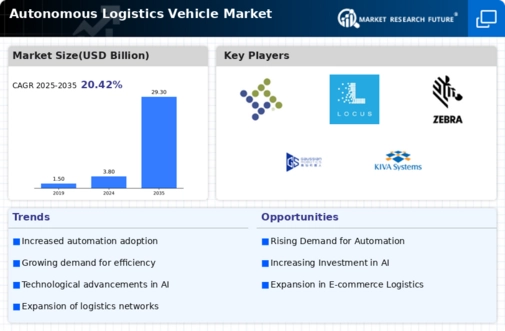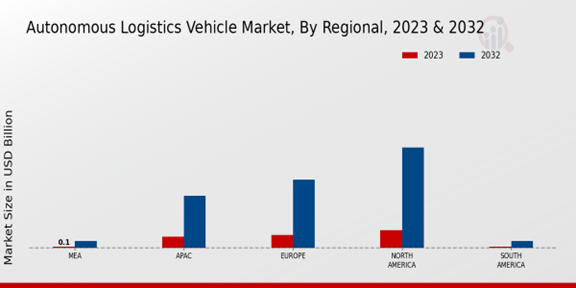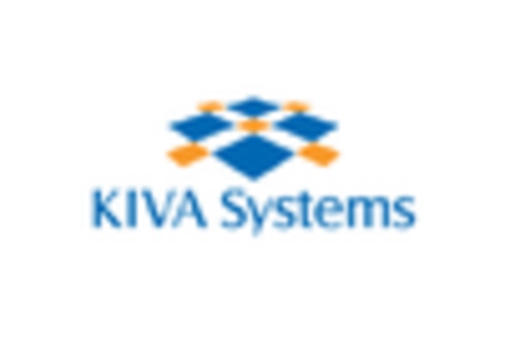Labor Shortages
The Global Autonomous Logistics Vehicle Market Industry is significantly influenced by the ongoing labor shortages in the logistics sector. As the demand for goods continues to rise, companies face challenges in finding qualified personnel to manage logistics operations. Autonomous vehicles present a viable solution to mitigate these labor constraints, allowing businesses to maintain productivity without relying solely on human labor. This trend is particularly evident in regions experiencing acute labor shortages, where the adoption of autonomous logistics solutions is accelerating. Consequently, this factor is likely to drive market growth as companies seek to optimize their workforce.
Market Growth Projections
The Global Autonomous Logistics Vehicle Market Industry is poised for substantial growth, with projections indicating a compound annual growth rate (CAGR) of 20.42% from 2025 to 2035. This growth trajectory is driven by increasing investments in automation technologies and the rising need for efficient logistics solutions. The market is expected to expand from 3.8 USD Billion in 2024 to an impressive 29.3 USD Billion by 2035. This upward trend suggests a robust demand for autonomous logistics vehicles, as businesses increasingly recognize the potential benefits of integrating these technologies into their operations.
Sustainability Initiatives
The Global Autonomous Logistics Vehicle Market Industry is increasingly aligned with sustainability initiatives as companies strive to reduce their carbon footprints. Autonomous vehicles, particularly electric ones, contribute to lower emissions compared to traditional logistics methods. This shift towards greener logistics solutions is being driven by regulatory pressures and consumer demand for environmentally friendly practices. For instance, logistics firms that implement electric autonomous vehicles can reduce greenhouse gas emissions by significant margins. As sustainability becomes a core focus for businesses, the market is expected to benefit from this trend, further propelling its growth.
Technological Advancements
The Global Autonomous Logistics Vehicle Market Industry is propelled by rapid technological advancements in artificial intelligence and machine learning. These innovations enhance the operational efficiency and safety of autonomous vehicles, enabling them to navigate complex environments with minimal human intervention. For instance, companies are increasingly integrating advanced sensors and real-time data analytics into their logistics operations. This trend is expected to contribute to the market's growth, with projections indicating a market value of 3.8 USD Billion in 2024, reflecting a burgeoning interest in automation within the logistics sector.
Rising Demand for Efficiency
The Global Autonomous Logistics Vehicle Market Industry experiences a surge in demand for operational efficiency among logistics providers. Businesses are increasingly seeking solutions that reduce costs and improve delivery times. Autonomous vehicles offer the potential to streamline supply chain operations, thereby enhancing productivity. For example, companies that adopt autonomous logistics solutions report reductions in operational costs by up to 30 percent. This drive for efficiency is likely to be a significant factor in the market's expansion, with expectations of reaching 29.3 USD Billion by 2035, indicating a robust growth trajectory.
Government Support and Regulations
The Global Autonomous Logistics Vehicle Market Industry is bolstered by supportive government policies and regulations aimed at fostering innovation in transportation. Various governments are investing in infrastructure and providing incentives for companies to adopt autonomous technologies. For example, regulatory frameworks are being established to ensure safe operation while encouraging research and development in autonomous logistics. This governmental backing is crucial for the market's growth, as it not only facilitates the deployment of autonomous vehicles but also instills confidence among investors and stakeholders. Such initiatives are likely to play a pivotal role in shaping the future of the industry.

















Leave a Comment